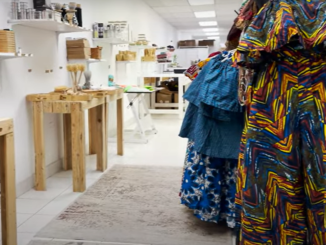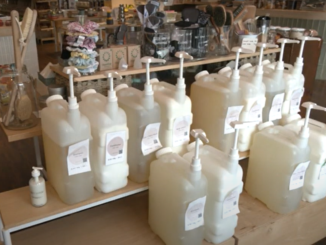
I got to sit down with Patty Tamlin and James Mckay. Co-hosts on their show, Stouffville Morning. On Whistle FM Radio. I got to hear their perspectives on how the Journalism industry has been doing since the pandemic hit last year. Along with how their lives changed throughout these times.
During my interview with Patty who also is a CRTC Nurse along with being a radio co-host. Elaborated on how the industry has taken a hit in some places but not all. Patty emphasized how many newsrooms laid off numerous co-workers, fewer entry-level job opportunities, fewer newsroom internships, constant news about Covid-19 and companies shutting down or relocated operations elsewhere. “Being a radio co-host is tough”. “Going from one place to another isn’t easy but it’s nice to know you have the power and responsibility to help and support people. While making sure everyone is accounted for and is ok”. “That’s what brings me peace and it’s just being a good samaritan”. These are some of the words she expressed to me during her interview. In my talk with James. He spoke on how Patty’s involvement and contributions towards citizens within her community are “amazing” and “she deals with the sickest of the sickest”.
Covid-19 hasn’t been easy for anyone and especially Whistle FM. The station shut down operations, restructure their homes and set up shows for co-workers to work in basements or on coffee tables. Despite this, the biggest reason Whistle FM shut down their building was due to insufficient funds from sponsorships. To pay monthly rent and support the local town station. Having them relocate their airways in remote areas or staff homes. Whistle FM wasn’t the only station closed down as many Journalistic news outlets have dealt with or are dealing with revenue loss during the pandemic. It is estimated that newspaper companies revenue fell 42%, while TV stations fared better. Since then, TV networks have steadily stayed afloat. Despite stations like MNSC loss, 27% of revenue as CNN’s was 14%.
Furthermore, the Pew Research Centre who analyzed the data was surprised and quite intrigued by how one of the biggest news channels managed to be ok since Covid. Since March 2020, four of the biggest sectors in the Journalism industry have had their ups and downs. Newspapers, for instance, lost 42% in advertising and 8% of circulation revenue. As for Cable TV, it gained 41% in channel ad revenue. 11% revenue increase for Network TV – specifically night news. As well as a 24% decrease and 37% increase in the revenue department for Local TV.
These numbers might seem alarming or crazy to some folks but Covid has taken a toll on the people working inside those buildings too. According to Journalism Crisis, they found 21% of staff salaries have been cut, 6% experienced furloughs, 6% laid off and unemployed isn’t far near away nowadays. This also includes job prospects like young Journalist post-graduation opportunities slim to none. In addition to this, 2,053 editorial and non-editorial workers have also lost their jobs. The latest numbers can be seen on the COVID-19 Media Impact Map for Canada. The solutions to these issues aren’t easy to solve but there aren’t impossible to fix either. CAJ, Canadian Association of Journalists are working around the pandemic and President, Brett Jolly said “It is gut-wrenching to hear about yet another round of mass layoffs in Canadian media”.”While we recognize that the COVID-19 pandemic has created global economic instability, it is disheartening to see the jobs of talented journalists are repeatedly left on the cutting room floor.”
Also adding to the conversation, Chris Sarpong, a Corus spokesperson addressed how 70 journalists who were let go deemed “incorrect” and significantly flawed on the matter. He did, however, decline any question regarding the exact lay-off number. He said their company plans on hiring a number of journalists in “growing” areas within the field. Brett finished off by saying “Journalism has been deemed an ‘essential service’ during the pandemic.” “From coverage of the crisis in long-term care homes to the inequities faced by temporary foreign workers, journalism has proven its invaluable role.”




Be the first to comment